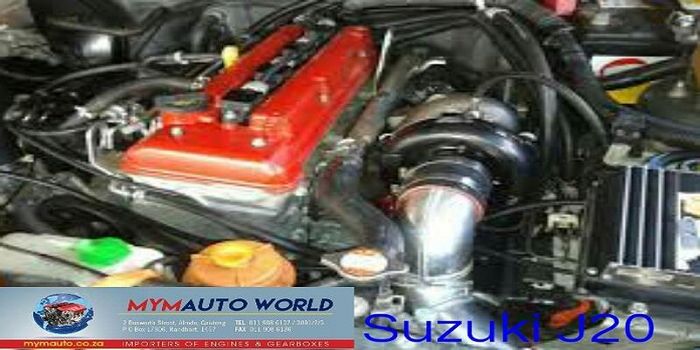Opel Corsa Engine: Efficiency and Reliability for Your Car
Opel Corsa Engine: Efficiency and Reliability for Your Car
Blog Article
Exploring the Inner Operation of a Compact Lorry's Engine System
As vehicle drivers, we commonly take for given the intricate procedures that occur within the boundaries of our car's engine system. In this expedition of a small vehicle's engine system, we will certainly unravel the internal operations of this mechanical symphony, losing light on the secrets that drive us forward on our everyday trips.
Combustion Refine Introduction
The combustion process in a portable car's engine system is a critical system that efficiently converts gas into energy to power the lorry. This process takes place within the combustion chamber of the engine, where fuel and air mix, stir up, and create regulated explosions. The combustion procedure includes four major phases: intake, power, exhaust, and compression.
Throughout the intake phase, the piston moves downward, drawing in a blend of air and fuel right into the combustion chamber. The next phase, compression, involves the piston relocating up, compressing the air-fuel combination to boost its strength. Ultimately, in the power phase, the spark plug sparks the compressed mixture, leading to a fast development of gases that requires the piston pull back. This down motion creates the power required to drive the automobile. In the exhaust stage, the scorched gases are expelled from the combustion chamber via the exhaust valve, preparing the chamber for the next cycle. This cyclic burning process is essential to the operation of a portable automobile's engine system, ensuring reliable energy conversion for propulsion.
Piston and Cylinder Interaction

The piston's exact fit within the cyndrical tube is necessary for preserving ideal compression and protecting against energy loss during burning. Tight clearances between the piston and cyndrical tube wall surfaces make certain reliable securing, enabling the piston to move smoothly without allowing gases to leak past. Appropriate lubrication is likewise important to minimize rubbing and use between these parts, boosting longevity and performance.
Furthermore, the style and products made use of in making the piston and cyndrical tube effect engine effectiveness and durability. Modern engines often use light-weight yet resilient materials like light weight aluminum alloys for pistons and cyndrical tube linings to minimize inertia and boost thermal effectiveness. Overall, the unified communication in between the piston and cyndrical tube is essential to the engine's performance and overall efficiency.
Gas Injection System Performance
Gas injection systems in small automobile engines play a crucial role in exactly providing fuel to the burning chamber for controlled and effective ignition. The fuel shot system works by infusing gas right into the combustion chamber at the optimal minute during the engine's operation (opel corsa engine). This exact timing ensures that the fuel blends equally with the air for correct burning, resulting in boosted fuel performance and decreased exhausts
There are mainly two kinds of gas shot systems utilized in compact lorry engines: port fuel injection (PFI) and direct fuel shot (DFI) PFI systems infuse fuel right into the intake port prior to the consumption valve, while DFI systems inject fuel straight right into the burning chamber. Both systems have their advantages, with DFI offering far better fuel atomization and PFI offering a more economical remedy.
Recognizing Engine Air Conditioning Mechanisms
Reliable operation of a small automobile's engine depends greatly on the performance of its cooling mechanisms. The air conditioning system in a compact lorry usually is composed of a number of components working with each other to regulate the engine temperature level. Understanding these engine cooling systems is crucial for preserving the efficiency and longevity of a portable car's engine system.

Exhaust System Parts Explained
The ideal functioning of a compact car's engine cooling mechanisms depends on a corresponding system known as get more the exhaust system, which consists of different crucial components for ensuring reliable discharges and engine performance. The exhaust system includes components such as the exhaust manifold, catalytic converter, muffler, and tailpipe. The exhaust manifold gathers exhaust gases from the engine's cyndrical tubes and courses them to the catalytic converter. The catalytic converter then transforms hazardous pollutants in the exhaust right into less dangerous emissions before launching them with the muffler and tailpipe.
One vital component of the exhaust system is the oxygen sensing unit, which checks the oxygen degrees in the exhaust gases to help manage fuel consumption and make certain ideal engine performance. opel corsa engine. Furthermore, the resonator may be existing in some exhaust systems to reduce noise levels. Generally, the exhaust system plays a vital function in keeping engine efficiency, decreasing harmful emissions, and ensuring a quieter driving experience for compact automobile owners

Conclusion
To conclude, the small lorry's engine system is a complicated mix of components that interact to help with the burning procedure, transform gas into power, and get rid of waste gases. Understanding the inner functions of the official statement engine system, including the piston and cylinder interaction, gas shot system, engine cooling mechanisms, and exhaust system elements, is vital for keeping optimum performance and effectiveness of the lorry.
The combustion process in a portable lorry's engine system is a web critical mechanism that successfully converts fuel right into energy to power the automobile.Fuel injection systems in compact lorry engines play a critical role in precisely supplying gas to the combustion chamber for controlled and efficient ignition.There are mainly 2 kinds of gas shot systems utilized in portable lorry engines: port gas shot (PFI) and straight gas shot (DFI) Comprehending these engine air conditioning mechanisms is essential for keeping the efficiency and long life of a compact vehicle's engine system.
The optimal performance of a compact lorry's engine cooling systems depends on a complementary system known as the exhaust system, which consists of numerous essential parts for ensuring effective discharges and engine efficiency.
Report this page